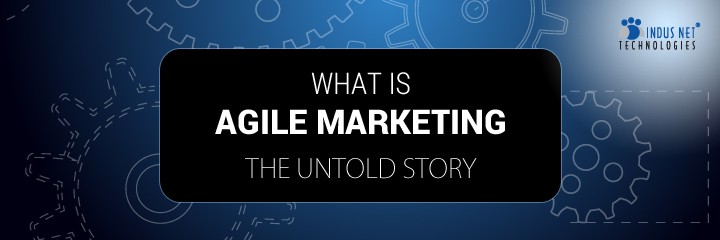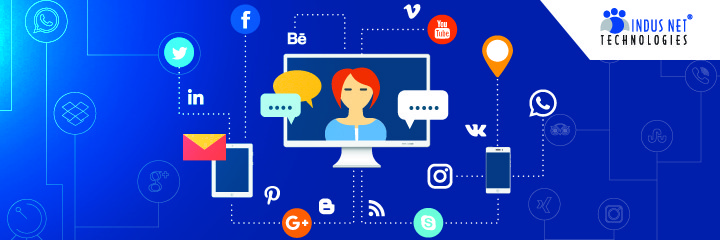
What You Must Know About Agile Marketing?
If you have found it difficult to understand why certain marketing campaigns, despite great analytics and data, don’t actually fare very well in reality, it is probably because these campaigns are not in touch with ground realities. Customers or our target audiences aren’t monolithic forces, and they are not homogeneous, though our data might like us to believe. Each customer or client is an individual, and they are motivated by various internal and external factors to make the purchase decisions that they do. To stay abreast of these disparate individual clients and customers, marketers and decisions makers should abandon the idea of cliched marketing campaigns that run for months, based on data and analytics that a CRM might provide. Agile marketing strategy addresses this issue, and puts individual customers and clients to the forefront. It also reduces the duration of campaign cycles, and ensures that micro-campaigns and hyper-collaborative team efforts bring the flexibility and change required to dynamically evolve our marketing efforts. A little about agile marketing With a focus on end-customer, agile marketing helps teams to work in a highly functional and effective manner, by being iterative, flexible and self-organizing. We must remember that Agile Marketing is not related to Agile Development, and though there may be a bit of inspiration from the way user experience design, agile marketing is an entity that stands on its own. If you wish to bring agile marketing strategies to your team, it is probably better not to use terminologies related to agile software development, as marketing strategies are quite different form software development. Most importantly, developers often follow agile as if it were the New Testament, but marketing teams and CFOs or CMOs need not, and instead, keep evolving their strategies based on changing customer needs and trends. If we look at things in a realistic way, agile marketing is all about suiting marketing strategies to changing trends, technologies, bi-directional conversations, and the unending production of Big Data. In other words, there will soon be a day when we stop calling agile marketing “agile marketing”, and instead, call it just “marketing”. Here is how agile marketing is usually structured: Agile marketing strategy is often inspired by the Scrum framework, which involves creating lists of priorities. These priorities are taken up by team members or teams in “sprints”. The team or the team member has a very short period of time to complete that marketing exercise, probably 2-4 weeks, instead of 4-6 months in regular marketing campaigns. Teams and members meet each day for short stand-up meetings with the team leader (or the scrum master, if you will), and the various building blocks of the projects (different sprints), are managed to ensure they are right on track, by whoever is overseeing it. At the end of each sprint, a marketing goal or exercise should be completed. At the end of the completion, one reviews the results. Soon after, the next chunk of a marketing strategy is distributed among team members, as different sprints. Instead of taking it all up as a single and unitary marketing campaign, the agile methodology allows for breaking up of a marketing strategy into sprints, and completing them, discarding them, or altering them based on the results of each sprint. Important values of agile marketing, in simple words Being open to changes in marketing plans As you may have already observed, your customers are not unitary, and belong to diverse demographics and psycho-graphics. It would be foolhardy to reduce an individual to a statistic, and club them under broad categories. Instead, use agile marketing strategy to keep changing your marketing campaigns, as and when your customers’ tastes change. With the proliferation of social media, customers’ tastes, values and needs change almost every other day. Testing and monitoring campaigns rapidly Do not stop at tracking and monitoring customers’ changing needs and trends. Track every sprint that your team undertakes and monitor its success. Each sprint has to teach you something, and should help you move along with your customers. As customers’ trends change every day, you should change your strategy too, just as quickly. Testing opinions and matching them with data Market research and opinion analyses can be taken up as regular sprints, you can match these sprints with the data you have accumulated on your CRM. CRM is quite agile itself, but we tend to look at it as a constant. Using sprints helps you to make sense of your CRM analytics in a more agile manner. Conduct micro-experiments to test larger marketing ideas If you are running a marketing campaign, it has to evolve with your customers. The best way to understand what your customer wants, or how each of one of them is changing every day, is to conduct micro-experiments. These micro-experiments can be tested against your larger marketing ideas, and evolve as you get the results. In fact, these smaller experiments can consist of sprints too. Focusing on individual aspirations, instead of on large markets Agile marketing puts the customer or the client in the center. Marketing strategy itself takes a backseat, and gives more importance to the changing needs and desires of customers. When individual aspirations are given more importance than a monolithic market segment, your marketing strategy is likely to get super-efficient. A radical approach to collaboration Often, collaboration involves various hurdles that exist within hierarchies. An agile marketing framework allows you to collaborate with anybody in your team. Even your most-junior team member will probably be able to communicate with your senior marketing professionals, and your marketing manager may be able to communicate with sales guy better. Of course, as this is a customer-centric model, there will always be collaborations with customers both on social media, and offline, all along the sprints that you undertake. Bringing agile marketing to your work floor To bring agile marketing to your teams, you probably do not have to work too hard. You must remember that this model exists to make things easier, more








